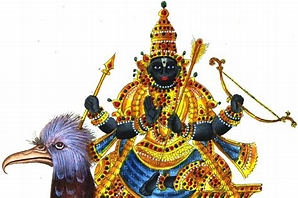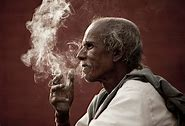Deepavali, the festival of lights, also celebrates delicious food, especially in Kasi, where the golden deity of Annapoorani, the goddess of nourishment, takes center stage, attracting countless devotees to the temple.
According to the Puranas, Parvati once playfully closed Paramasivan's eyes, which resulted in devastating darkness enveloping the earth and affecting all living beings. To rectify this, Sivan opened his third eye. Feeling remorseful for her playful act, Parvati decided to perform penance on earth. She took residence in Kasi, adopting the name Annapoorani, and was depicted holding a rice bowl in one hand and a serving ladle in the other.
The once-prosperous town fell into the grip of famine, and the King prayed to Annapoorani to relieve their suffering. She answered his prayers and eased the famine. In gratitude, the King asked her to stay in Kasi for eternity to ensure the prosperity of his subjects, and she graciously agreed.
According to the Kasi Kandam, Brahma originally had five heads, and Shiva removed the fifth head, which symbolized ego. To atone for this act, Shiva traveled to Kasi and prayed to Annapoorani to relieve him of the consequences. The Purana states that she offered him a ladle of rice as alms. Since she fed Lord Shiva Himself, devotees pray to her with complete faith and fervor.
The Annakoot festival is celebrated in India each year after Deepavali. On this occasion, the Sri Annapoorna temple attracts a large crowd of devotees. Mountains of fruits, sweets, and cereals are presented before the Goddess and then distributed to the poor as Prasad. Coins are also given to the devotees, and it is believed that anyone who worships these coins will be blessed with a successful and prosperous life.
A highlight of the temple is that every year, on the day before Deepavali, the golden idol of Sri Annapoorna is opened for darshan (viewing). This idol can only be seen on that day, making it a truly remarkable sight. Goddess Annapoorna is seated in the center, holding her bowl and ladle. On her left is Goddess Lakshmi, and on her right is Sri Bhudevi. All of these idols are made of pure gold and are stunning to behold. In front of them stands Shiva, made of silver, asking for alms. A grand procession accompanies the event of Annapoorani in a chariot, adorned with laddoos, which is another highlight during the celebrations.
Sri Annapoorna Temple is located on Dashaswamedh Road, Viswanath Gali, near the Kashi Viswanath Temple in Varanasi.
There is a legend from southern India that tells how Lord Shiva was cured of a curse known as bharamahatya dosha. This curse resulted from Shiva removing one of Lord Brahma's five heads. According to the legend, Brahma's skull became attached to Shiva's hand, earning him the name Kapalieeshwara. The curse was lifted when Shiva was offered food by Annapurna Devi. Consequently, all the tri-devi goddesses are referred to as Annapurna Devi.
O Mother Annapoorna, You Who are always Full (with the gift of Food and Blessings), You Who are the Beloved of Shankara, O Mother Parvati, Please grant me the Alms of Your Grace, to awaken within me Spiritual Knowledge and Freedom from all Worldly Desires.
(**Reposted an article: 'Faith' - The Hindu, dated 28/10/2024, and Nangia Blogs, dated 28/10/2016, with minor modifications)













